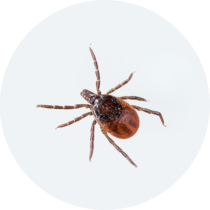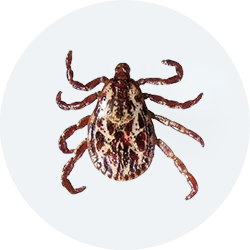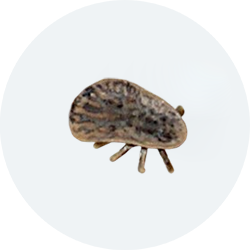Ticks
Ticks are members of the arachnid group. They are ectoparasites (external parasites), living by hematophagy on the blood of mammals, birds, and occasionally reptiles and amphibians. Ticks are important vectors of a number of diseases, including Lyme disease and Tick-borne meningoencephalitis.
Ticks are found mainly in outdoor areas with woods, shrubs, weeds, and tall grasses. They are particularly found in humid environments. The only ticks generally found to live indoors is the Brown Dog Tick. Other ticks may enter the home via a pet or person who has been outside in tick-friendly areas.

Types of Ticks

Characteristics: Oval; brown to reddish-brown with white-gray markings.
Legs: 8
Antennae: No
Habits:
- Sometimes called Wood Ticks.
- The highest risk of being bitten occurs during spring and summer.
- Can transmit diseases such as Rocky Mountain Spotted Fever and Tularemia.
Habitat
American dog ticks are found predominantly in areas with little or no tree cover, such as grassy fields and scrubland, as well as along walkways and trails. Residential areas containing overgrown shrubs, weeds, tall grass, and clutter attract the rodents that are hosts for immature ticks. Adult ticks climb onto a grass blade or other low vegetation, cling to it with their third pair of legs, and then wave their legs when a potential host approaches. As the host brushes against the vegetation, the tick will grab onto the passing animal or human.

Characteristics: Oval in shape with a covering of short hair, their bodies are semi-transparent and turn red after feeding.
Legs: 8
Antennae: No
Habitat:
Bird ticks are generally found in humid and hot places and are more active during spring and early summer and are naturally found in places where pigeons, sparrows and chicken’s nest.
Humans are attacked by this insect during the migration and relocation of small birds from their nests, and they enter through the seams and cracks in their homes to find food and feed on human blood to survive.


